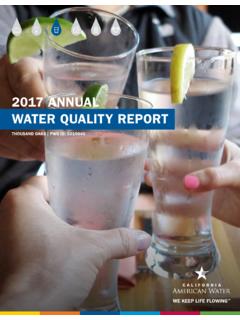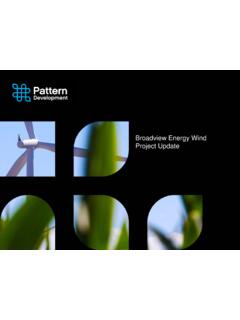Transcription of A Guide to Community Solar: Utility, Private, and Non ...
1 ACKNOWLEDGEMENTSThe Community Solar Guide was developed for the National Renewable Energy Lab by Northwest Sustainable Energy for Economic Development, Keyes and Fox, Stoel Rives, and the Bonneville Environmental Foundation. This Guide builds on the research and writing from the Northwest Community Solar Guide , published by Bonneville Envi-ronmental Foundation and Northwest Coughlin, Jennifer Grove, Linda Irvine, Janet F. Jacobs, Sarah Johnson Phillips, Leslie Moynihan, Joseph WiedmanREVIEWERS AND CONTRIBUTORSDick Wanderscheid, Bonneville Environmental Foundation; Jessica Raker, Northwest SEED; Rachel Huang, Sacramento Municipal utility District; David Brosch, University Park Community Solar, LLC; Tom Eichbaum, University Park Community Solar, LLC; Jerry Marizza, United Power.
2 Lauren Martindale, Clean Energy CollectiveGRAPHIC DESIGNL ynnae Burns, Bonneville Environmental FoundationAvailable online at: November 2010 NOTICEThis report was prepared as an account of work sponsored by an agency of the United States government. Neither the United States government nor any agency thereof, nor any of their employees, makes any warranty, express or implied, or assumes any legal liability or responsibility for the accuracy, completeness, or usefulness of any information, apparatus, product, or process disclosed, or represents that its use would not infringe privately owned rights.
3 Reference herein to any specific commercial product, process, or service by trade name, trademark, manufacturer, or otherwise does not necessarily constitute or imply its endorsement, recommendation, or favoring by the United States government or any agency thereof. The views and opinions of authors expressed herein do not necessarily state or reflect those of the United States government or any agency thereof. SPONSORSThis report was made possible through funding from the Department of Energy s Solar America Communities program.
4 To learn more, please visit: document is not legal or tax advice or a legal opin-ion on specific facts or circumstances. The contents are intended for informational purposes authors are solely responsible for errors and omis-sions. Prepared for NRELS ubcontract No. AGJ-0-40314-01 SECTION 1: INTRODUCTION2 Purpose2 How To Use This Guide2 Why Community Solar?2 Definition of Key Terms3 SECTION 2: Community SOLAR PROJECT MODELS6 utility -Sponsored Model7 Special Purpose Entity (SPE) Models12 Non-Profit Model19 Summary Chart of Benefit Allocations21 SECTION 3: EMERGING STATE POLICIES TO SUPPORT Community SOLAR22 Group Billing22 Virtual Net Metering23 Joint Ownership24 SECTION 4.
5 TAX POLICIES AND INCENTIVES 26 Business Energy Investment Tax Credit ( Commercial ITC ) Treasury Renewable Energy Grant27 Tax Credit Bonds28 Federal Grants29 State and Local Tax Considerations29 Interactions Among State and Federal Incentives30 SECTION 5: SECURITIES COMPLIANCE32 SECTION 6: GETTING STARTED34 SECTION 7: RESOURCES38 Organizations and Institutions38 Publications39 APPENDIX A40 Business Formation and Types: Special Project Entities for Community Solar Projects40 Summary Table of Business Types45 APPENDIX B46 Introduction to IREC s Community Renewable Model Program Rules46 TABLE OF CONTENTS2 SECTION 1: INTRODUCTIONPURPOSEIn communities across the United States, people are seeking alternatives to conventional energy sources.
6 Whether they aim to increase energy independence, hedge against rising fuel costs, cut carbon emissions, or provide local jobs, they are looking to Community -scale renewable energy projects for solutions. Advances in solar technology, an increase in federal and state tax incentives, and creative new financing models have made solar projects including Community solar projects, more financially Guide is designed as a resource for those who want to develop Community solar projects, from Community organizers or solar energy advocates to government officials or utility managers.
7 By exploring the range of incentives and policies while providing examples of operational Community solar projects, this Guide will help communities to plan and implement successful local energy projects. In addition, by highlighting some of the policy best practices, this Guide suggests changes in the regulatory landscape that could significantly boost Community solar installations across the TO USE THIS GUIDEThe information in this Guide is organized around three sponsorship models: utility -sponsored projects, projects sponsored by special purpose entities businesses formed for the purpose of producing Community solar power, and non-profit sponsored projects.
8 The Guide addresses issues common to all project models, as well as issues unique to each model. The Guide begins with examples of the three project sponsorship models, discussing the legal and financial implications of each model. This is followed by a discussion of some state policies that encourage Community solar ways for multiple individuals to share in the benefits of a single solar installation. The Guide then reviews some of the tax and financing issues that impact Community solar projects.
9 While the Guide cannot offer legal or tax advice, the authors hope to provide an outline of the legal hurdles and pitfalls that every project organizer should consider. Finally, the Getting Started section provides readers with practical tools and tips for planning their own project. The Appendices provide a more detailed comparison of business structures suitable for special purpose entities pursuing solar projects and the Interstate Renewable Energy Council s Model Community Renewables Program Guide cannot possibly describe all available incentives or cite all the examples of Community solar efforts nationwide.
10 To track the most recent developments, we refer the reader to resources in Section Community SOLAR? For the purpose of this Guide , Community Solar is defined as a solar-electric system that, through a voluntary program, provides power and/or financial benefit to, or is owned by, multiple Community members. Community Solar advocates are driven by the recognition that the on-site solar market comprises only one part of the total market for solar energy. A 2008 study by the National Renewable Energy Laboratory found that only 22 to 27% of residential rooftop area is suitable for hosting an on-site Introduction3 SECTION 1: INTRODUCTION photovoltaic (PV) system after adjusting for structural, shading, or ownership Clearly, Community options are needed to expand access to solar power for renters, those with shaded roofs, and those who choose not to install a residential system on their home for financial or other reasons.

















